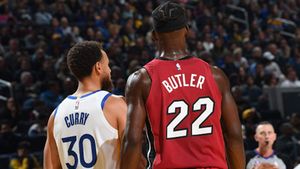Love is truly eternal in the classic films etched in the minds of generations: Heathcliff pines for Cathy and Romeo and Juliet sigh and die together. But for everyone’s favourite anti-heroine Bridget Jones, everlasting love sadly seems perpetually out of reach. The trailer for the character’s fourth outing – “Bridget Jones: Mad About The Boy” – has already revealed she’s now a widow. And, though she might long for her deceased husband Mark Darcy (Colin Firth), Bridget (Renée Zellweger) is sallying forth onto the dating scene once more.
This book adaptation arrives on February 14, 2025, Valentine’s Day, and it’s certain to bring out fans who have faithfully followed the character through her various adventures over the years. This presents marketers and brands with the opportunity to engage with a demographic often overlooked—those aged 45 and above, like Bridget herself.
Recent data from FAME (Film Audience Measurement and Evaluation) reports 31% of individuals within this demographic are heavy cinemagoers. Contrary to popular stereotypes, women do not reach 50 and lose interest in fashion, cosmetics, or new experiences. They are decision-makers with disposable incomes, eager to invest in goods and services providing the lifestyle they enjoy.
A study from AARP – which advocates for U.S. citizens aged 50-plus – found, alarmingly, though 46% of adults are aged 50 and above, they are represented only 15% of the time in online media images. Nearly half of those over 50 agree “ads featuring people my age reinforce outdated stereotypes.” According to research by CreativeX, older women are depicted three times more often than men as confined to domestic roles.
This blind spot for brands presents immense potential to challenge the narrative. By aligning themselves with films like “Bridget Jones: Mad About The Boy,” they can cultivate strong relationships through advertising or bespoke screening partnerships. An example would be Gü’s independent cinema partnership, which created luxury tasting experiences across 30 UK independent cinemas right before “Magic Mike’s Last Dance” screenings.
Brands can get creative through unique partnerships and licensing deals, much like those with “Wicked.” High-end products aimed at adults have been developed, from Foster Grant sunglasses to Rebecca Minkoff handbags. Similarly, the “Barbie” film resulted in premium product lines for adult fans, highlighting themes of inclusivity, diversity, and friendship—messages appealing to both Gen Z and older audiences.
The statistics from the previous film installment, “Bridget Jones’s Baby,” should also provide reassurance of “Mad About The Boy’s” box office appeal—“Bridget Jones’s Baby” grossed over USD $211 million worldwide (GBP £48.3 million within the UK and Ireland) against production costs of USD $35 million.
Brands would benefit from resolution for the new year by avoiding tired, lazy stereotypes. Engaging with audiences' interests and aspirations may lead to positive outcomes for brands clever enough to recognize this key audience.
Self-hatred, exemplified through characters like Bridget, continues to be depicted as something marketable. Bridget Jones epitomized the struggles many women experience with self-acceptance and societal expectations. From her infamous list of resolutions beginning with “I WILL NOT drink more than 14 alcohol units,” to her numerous self-help challenges, Bridget's internal conflicts often are entwined with comedic undertones, seemingly parodying notions of feminism.
Bridget’s quest for love often reflects broader societal themes; her character's growth—or lack thereof—raises questions about contemporary feminism's sincerity and direction. The juxtaposition of her vintage ideals and modern realities highlights how women's narratives evolve over time, particularly depicting the often transient ideal of self-acceptance.
With the introduction of the fourth book's premise—Bridget managing widowhood and discovering new romantic entanglements—there's scope for reflection on women’s empowerment post-50. This aligns well with the increasing recognition of older women’s stories and experiences within both media and consumer landscapes.
Bridget’s struggles, presented through the lens of comedic self-deprecation, might mirror the realities of many older women who feel underrepresented. Tapping directly to brands’ unique opportunities, they can resonate compellingly by promoting positive portrayals of older women, transforming narratives fraught with stereotypes.
Conclusively, the culture surrounding Bridget Jones serves multiple narratives—both as cautionary tales of lost empowerment and as embodiments of humor curing the difficulties of womanhood. The protagonists’ experiences, when skillfully narrated, might inspire brands to rethink their approach to audiences, striving to project stories of empowerment and representation, perhaps leading to shared narratives of success rather than self-deprecation.



